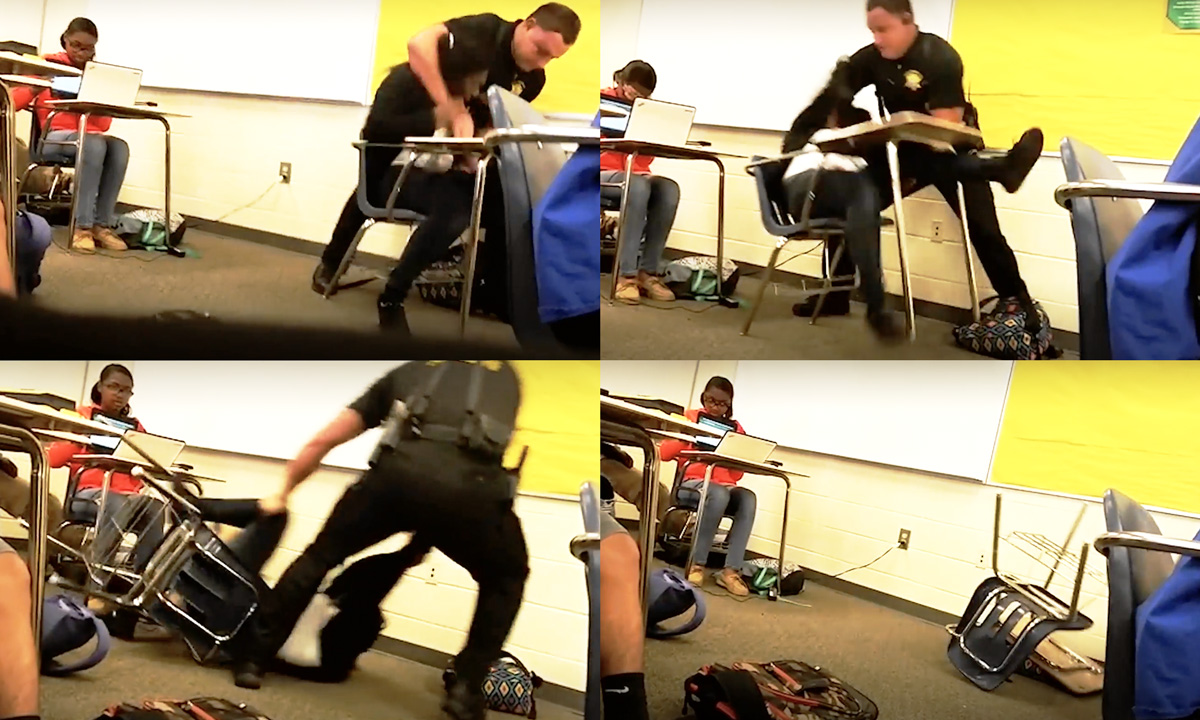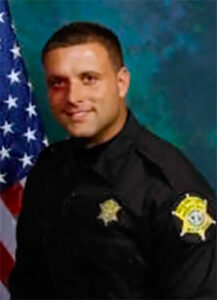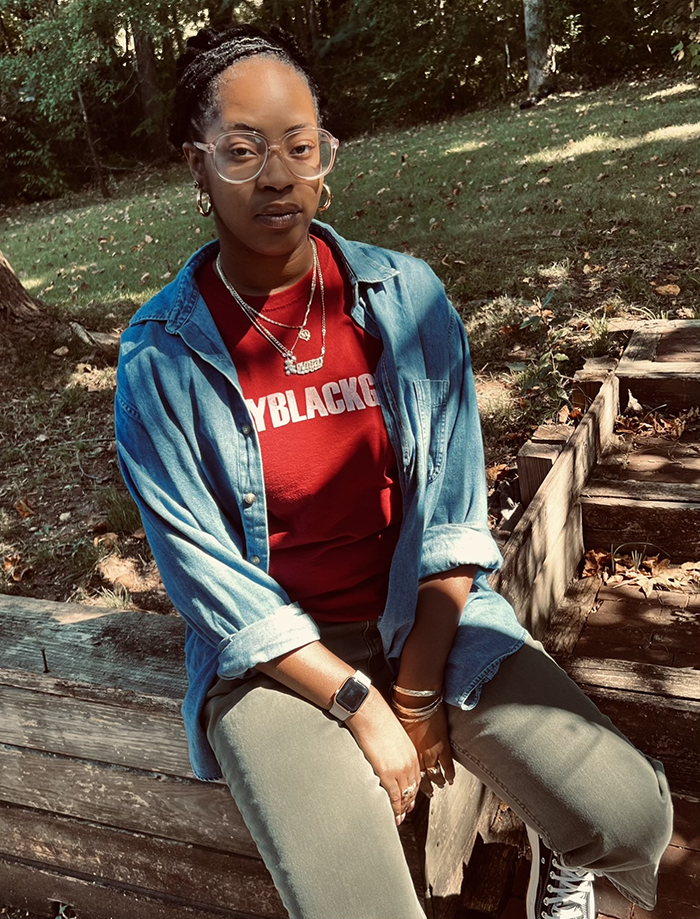Inside 285 Cases Where Campus Cops Injured — Or Killed — Students at School
Advocates and researchers tracked a decade of police use-of-force incidents in schools, finding widespread racial disparities in students harmed

Help fund stories like this. Donate now!
Former sheriff’s deputy Ben Fields doesn’t regret the time he put a 16-year-old girl in a headlock, flipped over her desk and threw her limp body across a South Carolina classroom.
The school-based cop had been called to the Algebra 1 classroom that momentous morning in 2015 to help remove a student who educators reported was being disruptive and refused to put away her cell phone. The violence that ensued ended with two students under arrest and Fields without a job.
Other Spring Valley High School students used their phones to capture a viral video and, almost instantaneously, spurred a national debate about whether police should be stationed in schools and the factors behind stark racial disparities in school-based arrests. Federal officials launched a civil rights probe into Fields’s use of force, and the disgraced cop — who was fired days later — became the latest white officer to face national scrutiny for manhandling a Black teenager.
The high-profile incident in Columbia, South Carolina, which unfolded amid an early wave of national Black Lives Matter protests, is one of 285 documented incidents in the last decade where school-based police subjected students to physical force or misconduct. They are detailed in a report released this week that calls attention to the frequency that campus officers place students — and Black teens in particular — in harm’s way.
Black students were the recipients of force in 84% of campus incidents between 2011 and 2021, researchers found, while just 3.2% of incidents involved white youth. Nationally, Black students make up 15% of public school enrollment while white students account for 46%.
Yet, in reflecting on the incident more than seven years later, Fields is not persuaded that longstanding racial disparities in student discipline reveal an underlying problem in his actions or those of any other school-based police officers. Instead, he said he was victimized after being cast on the national stage as a racist cop with a penchant for violence. He told The 74 that Spring Valley High, where nearly half of students are Black, is situated in a “crime-infested county” and that schools are “burning to the ground in this country” because of fights and drugs, but nobody — including educators and cops in schools — are willing to stop it because they’re too busy “worshiping at the church of race and race ideology.”
“I don’t care if someone disagrees with what I did,” he said. “I’m not here to defend it because I really don’t care anymore.”
In his seven years of school policing, he claims he never once had to arrest a white student for fighting on campus. Nationally, Black students are about three times more likely than their white classmates to get arrested at school yet Fields denied that implicit — or even explicit — racial bias is a factor in the stark gap. People should visit schools firsthand, he said, and “look for yourself where the problems are coming from.”
“The problem is, if I tell you that Black girls are more prone to fight than white girls, then guess what, I’m racist,” Fields said. “I’m racist. You can’t even say something like that — that’s factually true — without being racist.”
It’s this precise disposition, critics of school policing said, that make armed police officers a poor fit to create safe and welcoming learning environments. It represents a policing culture, researchers said, that’s led to hundreds of student injuries over the last decade and, in a handful of cases, student deaths.
Students sustained serious injuries in more than 60% of documented police use-of-force or misconduct cases since 2011, Russ Skiba, professor emeritus at Indiana University who has spent years researching racial disparities in school discipline, found in his latest research. For the report, he teamed up with The Advancement Project, a nonprofit racial justice group that began to map school-based police misconduct incidents in response to the situation at Spring Valley. The report is based on an analysis of news reports and likely presents a significant undercount of use-of-force incidents. Meanwhile, the use-of-force cases represent just a fraction of interactions that school-based police have with students.
Among those documented in the report, five students were killed — three by gunshot.
Cops tased students in nearly a quarter of incidents. Students were sprayed with pepper spray in more than 10% of documented cases and sexually assaulted by police in more than 8% of incidents. Student injuries include broken bones and concussions while more than 10% of student hospitalizations were required to remove taser prongs lodged beneath a young person’s skin.
Researchers have long struggled to document clear benefits of having officers patrol school hallways, with the latest report adding fodder to a growing body of research that suggests campus cops may actually do more harm than good.
Still, in the face of mass school shootings, their presence in schools has grown exponentially in recent decades with support from educators and the general public despite little evidence they’re effective at thwarting or mitigating such attacks. An August poll by the education group PDK International found an overwhelming 80% of people support school resource officers, including 94% of Republicans and 70% of Democrats.

While the Advancement Project began to map police misconduct in schools after the Spring Valley incident, multiple school districts embraced calls to remove police from schools in 2020 after George Floyd was murdered by a Minneapolis police officer. Since then, several districts have reversed course and reinstated campus law enforcement amid concerns of pandemic-era student misbehavior.
Raw video footage from Spring Valley in many ways brought the police-free schools campaign into the national discourse, Skiba told The 74, crystalizing it as an exemplar of “the problem of school police assaults.” But the problem remains present tense, he said, and “this is not in any way an isolated incident. There is at least one of these cases happening in schools across America every week — and it’s not surprising that some end in death.”
‘Officer Slam’
Even before Fields became the subject of national scorn, he had developed a bad reputation at Spring Valley — and the nickname “Officer Slam” — for being confrontational with students. On that brutal day, his reputation wasn’t lost on senior Niya Kenny, who recorded Fields on her phone and confronted the veteran officer about the way he was treating her classmate.
At the time, Kenny wasn’t trying to be an activist, she told The 74. She was simply reacting to what she was seeing with her own eyes. Kenny and the student in the video, who couldn’t be reached for comment, were both criminally charged with “disturbing a school function.” Both teens disenrolled from Spring Valley soon after and the charges against them were dropped about a year later.
Still, confronting Fields “was one of the best decisions I could have made,” said Kenny, now a 25-year-old substitute teacher in Atlanta. “I’m always so hard on myself about my impulsive decisions, but that one impulsive decision changed the entire trajectory of my life.”
With support from the American Civil Liberties Union, Kenny went to court to challenge state laws against disturbing schools and disorderly conduct. Last year, a federal judge struck down the vaguely written statutes, which allowed police to slap students with criminal sanctions for cursing, engaging in undefined “disorder” or being otherwise “obnoxious” at school and were used overwhelmingly to punish Black youth. Meanwhile, the South Carolina legislature rewrote its disturbing schools law so that students could no longer be arrested for disrupting their own schools.
In the interview, Fields portrayed himself as a man who was simply following the law, enforcing rules created by lawmakers against two “bad girls” who had gotten into trouble before. But the laws offered police discretion — wiggle room that made them impossible to enforce objectively, said Sarah Hinger, the staff attorney at the ACLU Racial Justice Program who represented Kenny.
“They violate due process because they don’t give an objective way of determining when someone is disturbing or disorderly or obnoxious,” she said. “That means that every single time a police officer, or somebody else, has to look at a child and make their own subjective judgment about whether they should be arrested or not.”

Not only did Kenny’s arrest make clear the subjective nature of the law, Hinger said, but the footage that she and other students uploaded to the internet was instrumental in the public’s understanding of police misconduct in schools.
“The degree of violence that’s visible in the video likely is what sets it apart for the public perceptions, and I think that’s why our client Niya was arrested because of the recognition of what it means to shed public light and scrutiny on those types of police actions,” Hinger said.
Similar incidents have been documented in schools across the country. In one, a 17-year-old student was left in a coma for 52 days in 2013 after getting tased while attempting to break up a fight between two of his classmates. Officials had accused the student of acting aggressively and failing to listen to their commands.
Last year, a former school resource officer from Farmington, New Mexico, was put on probation for child abuse and battery after he was caught on camera in 2019 slamming a disabled 11-year-old girl against a wall and wrestling her to the ground.
In 2018, five students from suburban Pittsburgh reached a $500,000 settlement after accusing school-based police of assault, intimidation and filing false criminal charges to justify excessive force. In 2019, a school-based officer was charged with sexually assaulting a 15-year-old girl in his office at a local high school.
Even as such confrontations unfold, Kenny said that her arrest — and the video of her classmate getting manhandled — ultimately led to progress, not just in changing laws locally but changing the national conversation around school policing.
“I never expected it to be this big and I never expected to have such an impact on the world,” she said. To this day, she recounts what happened to her nieces and nephews. “I told them, ‘you know, I’m a part of Black history in South Carolina.’ ”
Accountability remains elusive
Despite the public outcry and a sheriff who said that Fields failed to follow procedures, the former cop, who now works in sales, never faced criminal charges.
In dropping its federal inquiry, the Justice Department announced it failed to identify sufficient evidence to charge Fields with a crime. Federal civil rights law required prosecutors prove that Fields “willfully deprived an individual of a constitutional right,” an exceedingly high bar that excludes mistakes, misperceptions, negligence or poor judgment.
Such a reality is commonplace in use-of-force incidents at schools, the report found. In nearly 60% of the 285 documented cases in the last decade, officers were cleared without facing any consequences. Officers generally faced penalties in instances of sexual assault but punishment was rare in other contexts, with only 6.9% of officers suspended or fired and only 7.4% arrested or charged with a crime.
While previous research has found that school policing leads to a decline in graduation rates and increased suspensions, Skiba said the physical injuries and deaths highlighted in the new report are the most extreme harms of campus policing.
“We can expect that without accountability — for these incidents with a very low rate of accountability — that there really isn’t any incentive for change,” Skiba said. “There isn’t any incentive for schools or districts or police departments to monitor this, to stop this.”
For Fields, the lack of criminal charges left him feeling emboldened. To him, it’s proof that he didn’t do anything wrong.
“People calling for cops to be removed from schools or society are the very people who are probably committing crimes and standing up for criminals,” he said. “Schools did not get better the day that Ben Fields was fired.”
Sign up for the School (in)Security newsletter.
Get the most critical news and information about students' rights, safety and well-being delivered straight to your inbox.
Help fund stories like this. Donate now!

;)
